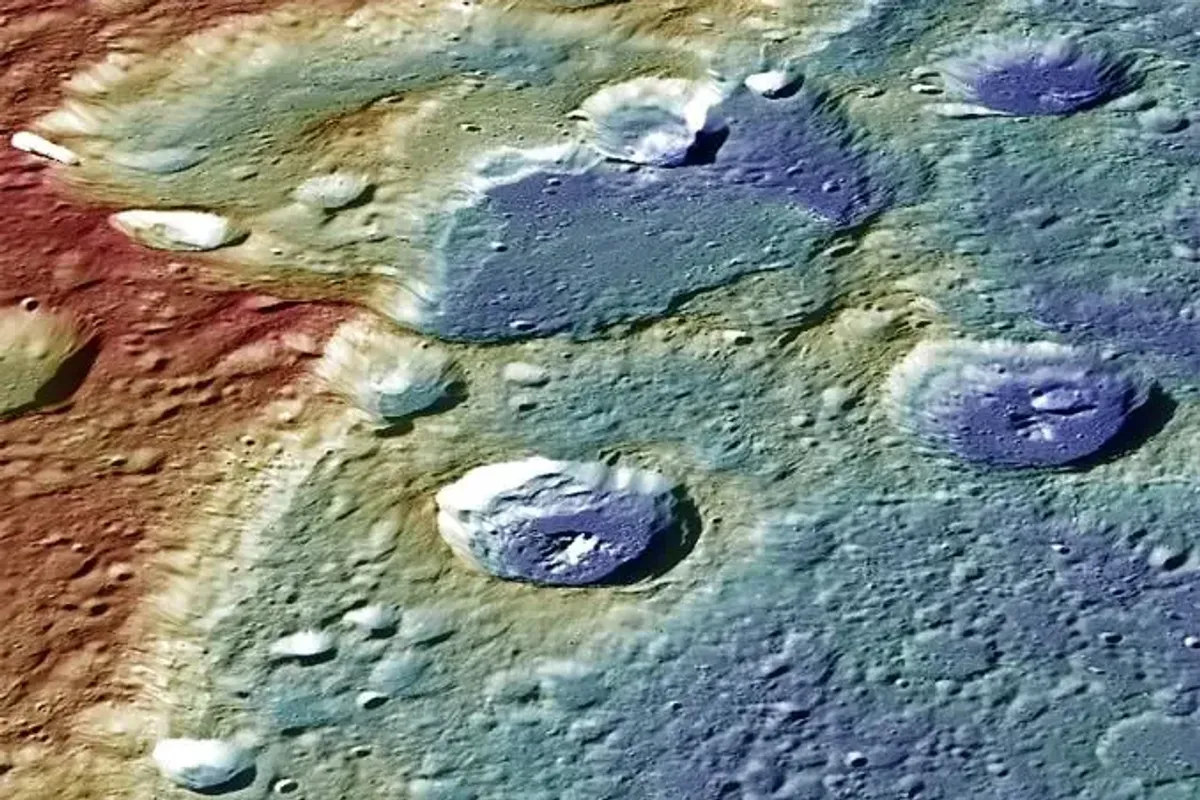
MERCURY MAY BE COATED IN A LAYER OF DIAMONDS ‘KILOMETRES THICK’
You’ve heard of the red planet, and we live on the blue planet, but it turns out there may be a diamond planet, too.
Mercury already holds the titles of smallest and fastest planet in our solar system (hence why it was named after the Roman god of speed) but it may also be a glittering treasure trove.
New modelling suggests that the celestial body, which is the closest planet to the Sun, may be harbouring a layer of diamond beneath its crust that is kilometres thick.
The theory formed thanks to NASA’s MESSENGER spacecraft, which spent 11 years orbiting Mercury and mapping the entire planet.
In so doing, it discovered abundant water in ice shadows at the poles, and also revealed that much of its surface is made up of graphite.
The distribution of this graphite has led planetary scientists to conclude that carbon was there at Mercury’s formation, as opposed to arriving on comets or asteroids, as IFL Science notes.
As a result, Yongjiang Xu, of China’s Center for High Pressure Science and Technology Advanced Research, has been investigating what happened to all that carbon during Mercury’s infancy, when it divided into its core and crust.
The planet likely contained even more carbon during this early period. However, the amount would have decreased as gases including carbon dioxide and methane escaped from its magma ocean surface.
Still, Xu and his co-authors write in a new paper, published in the journal Nature Communications: “The abundance of graphite in the Mercurian crust indicates that the planet remained saturated in a carbon phase during metal-silicate differentiation, core formation, and the entirety of magma ocean crystallisation.”
In other words, plenty of that carbon stuck around as the magma ocean hardened into the rocky surface we see today.
Nevertheless, carbon alone isn’t enough to make diamonds. You need pressure, too, and plenty of it.
According to the researchers, there are two scenarios which could have led to the formation of this diamond layer. The first: the diamonds were produced by the magma ocean; the second: they were squeezed out of the core as it crystallised.
The first scenario is only possible if Mercury’s magma ocean contained a substantial amount of sulphur, according to the experts, as this would have changed the chemistry to the point where diamond production was possible.
And yet, even if sulphur was abundant, it is improbable that, under this scenario, the conditions would been ripe for large-scale diamond production.
This means that the second scenario is far more likely, Xu and his team note.
Under this hypothesis, as the solid inner core formed, carbon would have been pushed out, thereby forming a diamond layer kilometres thick.
High temperatures could have burned the outer parts of this layer, transforming it back into graphite. And yet, much of the diamond could have survived between Mercury’s core and its silicate mantle.
Furthermore, the conductivity of this diamond layer might contribute to Mercury’s magnetic field, the scientists point out.
Still, the study’s senior author Dr Bernard Charlier, of Belgium’s University of Liège pointed out that the diamond layer most likely doesn’t consist of a single thick shell, but of various chunks.
“Let’s be honest,” he told New Scientist. “We have no idea about the potential size of those diamonds.”
Sign up for our free Indy100 weekly newsletter
How to join the indy100's free WhatsApp channel
/em> 2024-06-26T10:19:57Z dg43tfdfdgfd